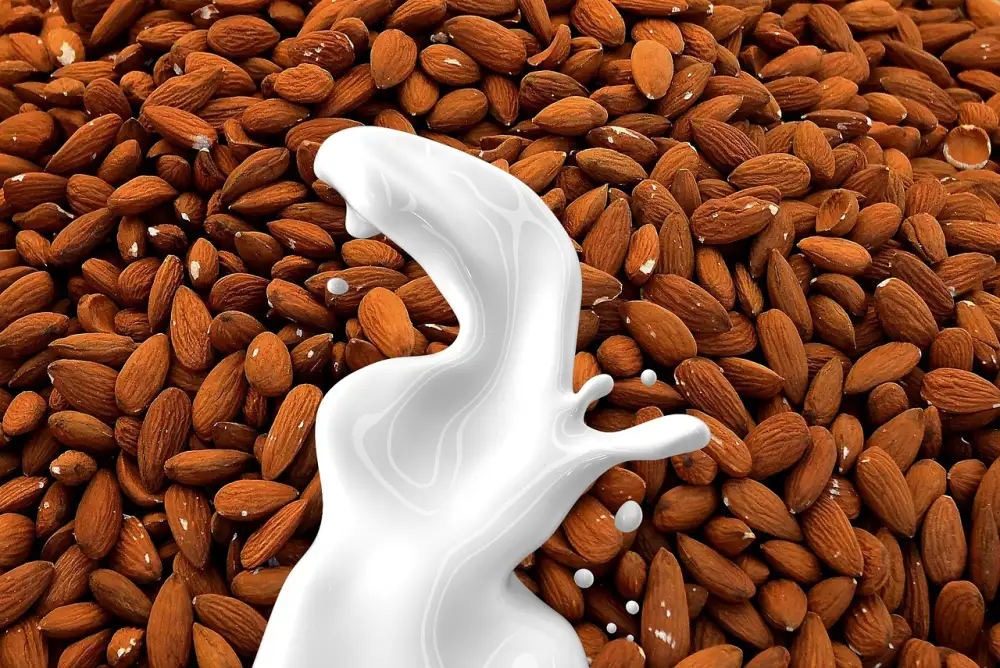Unveiling the Shelf Life of Almond Milk: Does Almond Milk Go Bad? Find Out Now!

Almond milk has gained immense popularity in recent years as a dairy-free alternative for those seeking a plant-based option. But have you ever wondered how long almond milk lasts? In this article, we delve into the fascinating world of almond milk shelf life. Whether you're a fan of this creamy beverage or simply curious about its longevity, join us as we uncover the secrets behind almond milk's shelf life and how to ensure its freshness. So let's dive in and discover if almond milk goes bad!
Understanding the Shelf Life of Almond Milk
Almond milk, a popular dairy alternative, has gained significant popularity among health-conscious individuals. But how long does almond milk actually last? The shelf life of almond milk depends on various factors, including its processing method and packaging.
Unopened almond milk cartons typically have a shelf life of about one week past the printed expiration date. However, this can vary depending on the brand and storage conditions. It is important to note that almond milk does not have the same longevity as cow's milk.
Once opened, almond milk should be consumed within 7-10 days for optimal freshness. However, this timeframe can also depend on factors such as temperature fluctuations and exposure to light.
To ensure you are consuming fresh almond milk, always check for signs of spoilage before consuming it.
Factors Affecting the Shelf Life of Almond Milk
Several factors can affect the shelf life of almond milk. One of the most important factors is the packaging. Almond milk that comes in aseptic packaging has a longer shelf life compared to those in cartons or bottles.
Another factor is the temperature at which almond milk is stored. It is crucial to keep it refrigerated at all times. Higher temperatures can promote bacterial growth and spoilage, reducing its shelf life significantly.
The quality of ingredients used in making almond milk also plays a role. Fresh almonds and filtered water are essential for producing high-quality almond milk with a longer shelf life.
Additionally, preservatives and additives can affect the shelf life of almond milk. Some brands may add preservatives to extend its lifespan, while others may opt for natural alternatives like vitamin E or citric acid.
Lastly, exposure to light can degrade the quality of almond milk and shorten its shelf life. It is best to store almond milk in opaque containers or keep it away from direct sunlight.
By considering these factors, you can ensure that your almond milk stays fresh for as long as possible, allowing you to enjoy it without any concerns about spoilage.
Signs of Spoilage in Almond Milk
It is important to be aware of the signs that indicate almond milk has gone bad. One of the first signs to look out for is a sour or off smell. If your almond milk smells rancid or has an unpleasant odor, it is likely spoiled and should not be consumed.
Another indicator of spoilage is a change in texture or consistency. Fresh almond milk should have a smooth and creamy texture. If you notice any clumps, curdling, or separation, it is a clear sign that the milk has started to spoil.
Additionally, discoloration can be a sign of spoilage. Fresh almond milk should have a light beige color. If you notice any darkening or unusual colors such as green or pink, it is best to discard the milk.
Lastly, taste plays a crucial role in determining if almond milk has gone bad. If your almond milk tastes sour, bitter, or generally unpleasant, it is no longer safe to consume.
Remember, consuming spoiled almond milk can lead to foodborne illnesses and should be avoided. It's always better to err on the side of caution when it comes to food safety.
Proper Storage Tips for Extending the Shelf Life of Almond Milk
Proper storage is key to extending the shelf life of almond milk. Firstly, it is important to always check the expiration date on the packaging before purchasing. Once opened, almond milk should be refrigerated at all times. It is best to store it in the coldest part of the refrigerator, ideally below 40°F (4°C). To prevent contamination and maintain freshness, make sure to tightly seal the container after each use. Avoid leaving almond milk out at room temperature for extended periods of time, as this can promote bacterial growth. Lastly, if you notice any unusual odor or texture changes, discard the almond milk immediately to avoid consuming spoiled product. By following these storage tips, you can enjoy your almond milk for a longer period while ensuring its quality and safety.
In conclusion, almond milk is a delicious and nutritious alternative to dairy milk. However, it is important to be aware of its shelf life and signs of spoilage in order to enjoy it safely. By understanding the factors that affect its shelf life and following proper storage tips, you can extend the lifespan of your almond milk and ensure its freshness. Remember to always check for any changes in smell, taste, or appearance before consuming almond milk. Enjoy this plant-based beverage in your favorite recipes or as a refreshing drink, knowing that you are savoring it at its best.
Published: 19. 12. 2023
Category: Health



